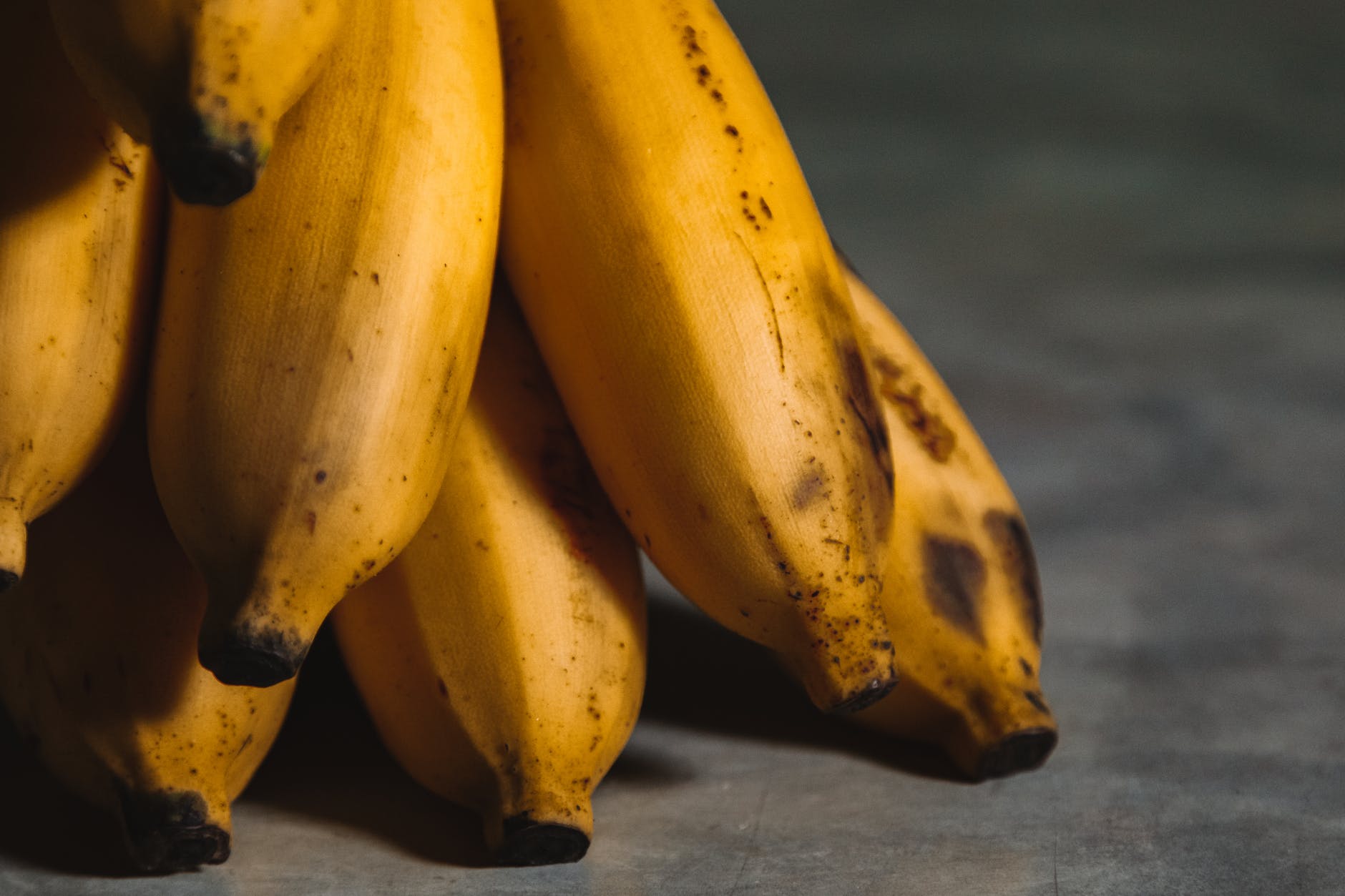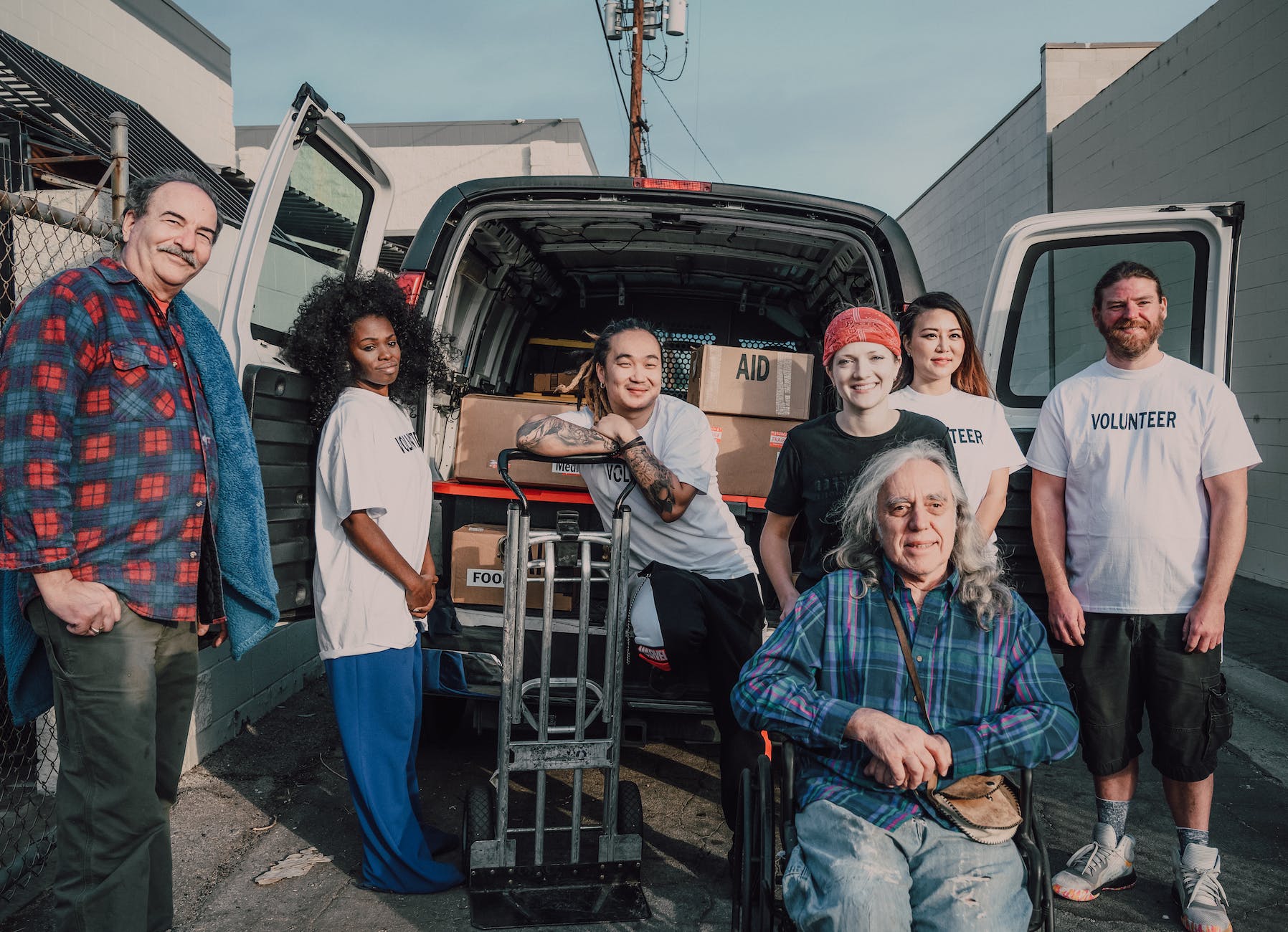“The adjective is the banana peel of the parts of speech.”–Clifton Fadiman

The Big Banana🍌
You don’t have to be in the grocery retail business to understand that when it comes to fruit, bananas are typically among the top three choices of American consumers. Sure, bananas are often the subject of jokes and pranks; nonetheless, there is something, well, a-peeling, about them.
Worldwide, it is believed that more than 100 billion bananas are consumed per year! Depending upon the year, the average American consumes 22-27 pounds of this sweet, smiling fruit. Clearly, this fruit is–I can’t help myself–top-banana!
As I learned more about bananas, I began to contemplate some shared similarities it has with people. Now, don’t, a-hem, go bananas. Just hang in there with me.
Bananas 101

Bananas are harvested unripe when the individual fruits are dressed alike in the same dull, green color. Each one is part of a huge cluster, called a hand–around 200–and separated into groups of 10-20, known as fingers. This reminds me of people who live in or belong to a specific community, organization, or group of people that look, behave, and think alike.
Once picked for market, green bananas begin to ripen throughout the process of traveling, and the hotter the temperature, the faster they ripen.
How many of us are guilty of this? We maintain that we will stand firm in our beliefs/convictions, and never fall prey to this thing or that And, yet, when life gets hot, really desperately hot, we often reach for the low-hanging fruit, the quickest way to find relief. Sometimes, these heated events pass without much effect. Other times, life’s fire truly transforms us–sometimes for the better, and sometimes for the worse, depending upon the person and/or the situation.
Pick of the Bunch

Once the bananas arrive in stores, they are often still green, albeit a lighter shade, and the inside fruit is often too firm and not yet sweet enough to be palatable. By this point, bananas have been broken into smaller bunches to sell to consumers, who may break them into even smaller groups. Meanwhile, the ripening continues, slowly transforming the fruit inside. Funny, how, like bananas, we can sometimes allow others to define, divide, and transform us from the inside out, whether we realize it or not.
It is through this breaking apart and traveling to consumers’ homes that the final transformation occurs. Many bananas will be individually peeled and used as a source of nutrition. Peels may become part of the compost pile used to fertilize new plant life. Either way, bananas, and their peels, have left their look-alike world to fuel a life or inspire recipes. How many of us are willing to break away from the group mentality in order to fuel new innovation, or feed a floundering heart?
Ripe for the Picking

Which leads me to the banana’s ultimate transformation–the mostly black/brown banana. Often found in a grocer’s produce clearance section, reduced for quick sale, these ugly, soft bananas are often maligned as waste. However, those of us who bake, know that for the sweetest banana breads and muffins, you need the darkest, blackest banana.
How alike overripe bananas are to those sweet souls society often writes-off or overlooks based upon how they look, where they live, the family/neighborhood/country they come from, the language they speak (or don’t speak), or any of the other number of ways in which we separate ourselves from those deemed “others.” It is so easy to do when people seem so different from us. What could we possibly have in common? And, yet, what gem of knowledge, friendship, or alternative vision are we missing by writing off even one person, much less several groups?
Ripe with potential

Looking in my fridge, there are often one or two dark bananas. This is because once bananas reach a desired level of ripeness, I purposely store them in the refrigerator to slow the ripening process of the fruit on the inside. Meanwhile, the skin will continue to darken, but the fruit inside will remain sweet and tasty with just the right texture for days to come. If I still don’t use the banana(s), I peel and store them in the freezer to use in later recipes. Sounds a lot like aging. Our outside may change, but inside, we remain full of insight–a contributing part to a proverbial family/friend/community recipe.
Appealing Facts

There are more than 1,000 types of bananas, subdivided into 50 groups. However, the bananas most often bought/sold in grocery stores essentially come from the same plant called the Cavendish. When corporate farms need to grow more bananas, they remove part of another established tree by cutting off shoots, called suckers, or removing part of an underground root, called a corm. These cuttings are planted, and establish new plants genetically identical to the previous Cavendish tree, keeping the price low. No wonder each generation seems to replicate the previous! Sounds similar to ingrained generational human behaviors.
Isn’t it interesting to note that despite the available variety, most commercial farms continue producing the same type of banana. There are some varieties known for their honey-like taste while others possess a sweet, creamy vanilla flavor. There is a variety with a tangy, lemon flavor and another that is described as tasting like apple. However, unless we actually taste one, we will never know or understand them by continuously choosing the Cavendish. This also sounds similar to how some humans go through life.
Better nature Appeal

We use adjectives to describe people, places, things, and even bananas. Those words can divide us and cause us to stay divided unless we are willing to break apart from the bunch. There is a rainbow world around–full of a wide variety of people, certainly more diverse than bananas, and yet we often limit our perspectives, our associations, and/or our actions to a small cluster of those most similar to us. We can do better. We must do better. Let us not allow partisanship, divisiveness, ethnicity, religion, skin color, or any words, to create otherness.
In the world of humanity, we are all offshoots from one origin–the same bunch, if you will. We may look, sound, speak, and act differently, but we are one. At times, parts of humanity may look as bleak and dark as those ripe bananas sitting inside my fridge, but peel back the skin, and we are the same: cells, tissues, organs, and systems. We are one, and we have only one life to live. Will we let adjectives keep us bunched up and contribute to the continuation of the divide, or will we look beyond the adjectives and under the skin, see the oneness, and choose to make a sweet difference?


